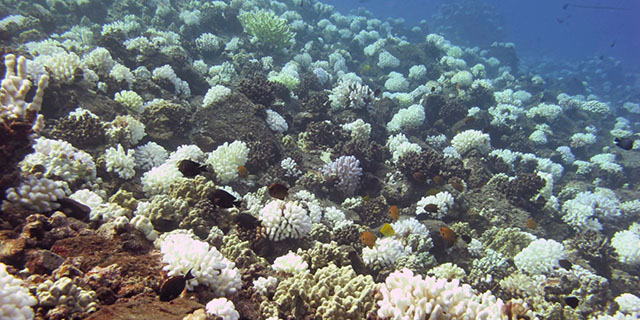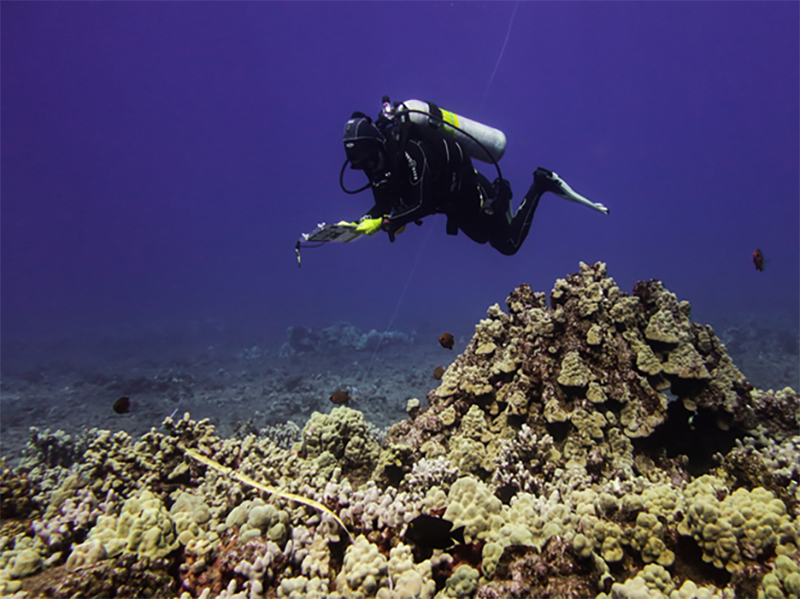Coral Bleaching

Coral bleaching at Molokini Crater
What Is Coral Bleaching?
Coral bleaching is a stress response caused by the breakdown of the mutually beneficial relationship that exists between coral and the algae (zooxanthellae) living within their tissues. When algae leave their coral host, the coral loses the source of their pigmentation – hence their pale or “bleached” appearance. Without their algal symbionts, bleached coral are in a vulnerable state because they rely upon these algae for energy. Bleached coral are still alive, but if the stress continues and algae loss is prolonged, mortality becomes more likely. Mass coral bleaching events have been linked with mounting thermal stress associated with a warming planet, and are expected to continue increasing in severity, geographic extent, and frequency over the coming decades.
Coral bleaching events in the Hawaiian Archipelago have increased in frequency and severity since 1996. In 2014 and 2015, the entire region experienced mass bleaching and mortality. Most recently, coral bleaching again occurred in 2019.
Monitoring Coral Bleaching in Hawaii
The Division of Aquatic Resources conducts episodic monitoring of coral bleaching during heat stress events across the Main Hawaiian Islands. Surveys are conducted in collaboration with the Hawaiʻi Coral Bleaching Collaborative (HCBC), which was formed in 2015 in direct response to the increasing frequency and occurrence of coral bleaching events across the Hawaiian Archipelago. HCBC is a multi-institutional group of scientists across the state from academic institutions, non-governmental organizations, and governmental agencies. HCBC aims to document the extent and severity of coral bleaching in the State of Hawaiʻi and to lay the groundwork for tracking coral response and recovery through time by rapidly assessing bleaching stress across Hawaiʻi’s coral reefs. Visit the HCBC website to learn more about HCBC, view coral bleaching monitoring resources, and explore data from past bleaching events.

NOAA Fisheries/Morgan Winston Pomeroy
Saving Coral and The Coral Pledge
While Hawaiian coral reefs experience coral bleaching, ocean users can help reduce the impacts of these stressful events. The Division of Aquatic Resources asks that specific steps (as described on this card) be taken to support our corals. While these are things we should be doing all the time, it’s especially important now. They include:
- Let fish protect reefs – avoid taking herbivorous fish like uhu and surgeonfish; they help control algae growth.
- Don’t touch corals – they are easily broken, so keep a distance from them.
- Stand on the sand – don’t walk on or trample corals, but keep to sandy patches.
- Use reef-friendly sunscreen – avoid products with oxybenzone or octinoxate.
- Keep chemicals away from storm drains – fertilizers, detergents, oil, etc. harm reefs when they make their way to the ocean.
- Anchor away from reefs – drop anchors only on sandy patches, or use moorings; keep anchor chains off reefs.
To learn more about The Coral Pledge and how you can help protect our reefs, view the television special “Saving Coral“.
